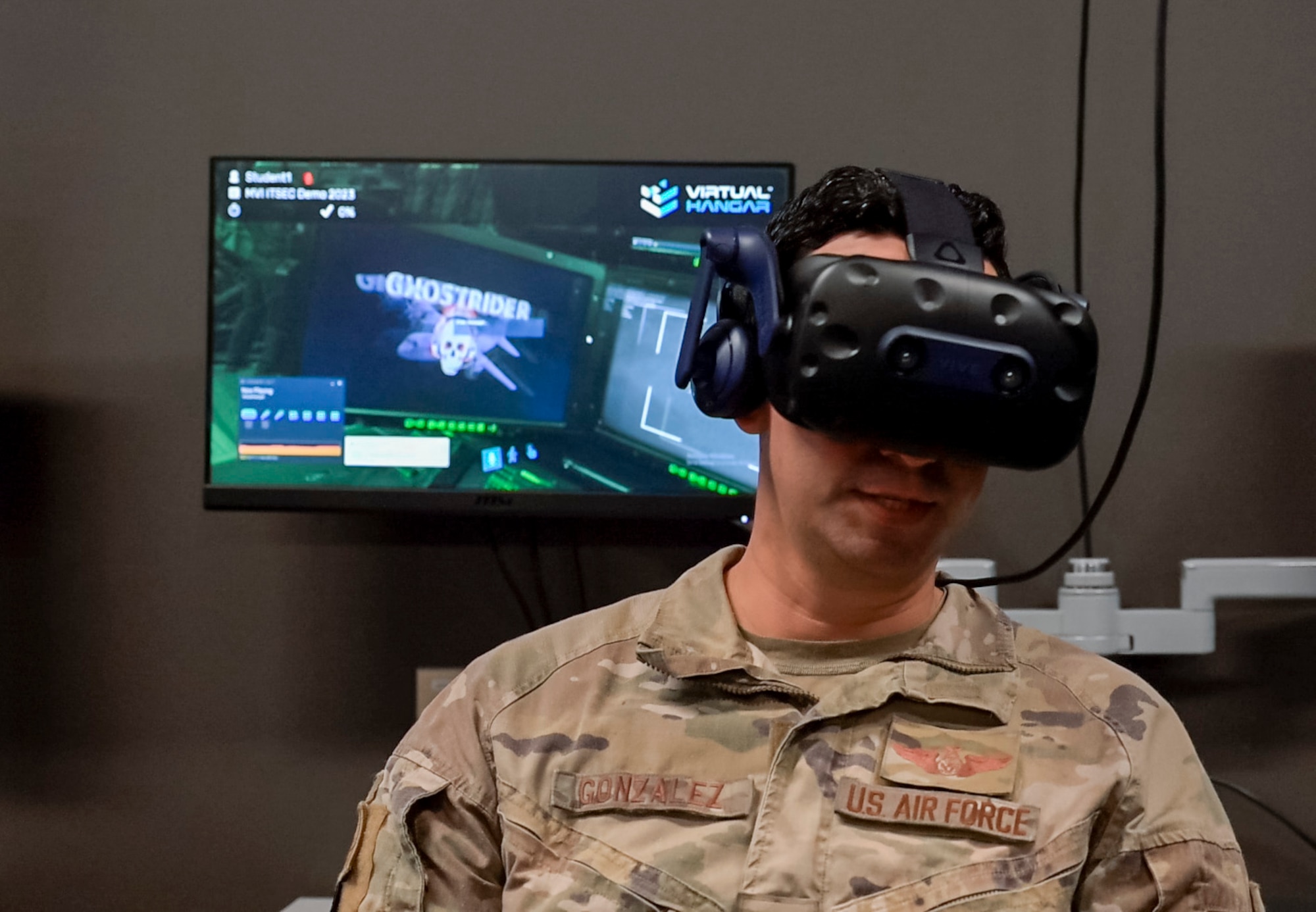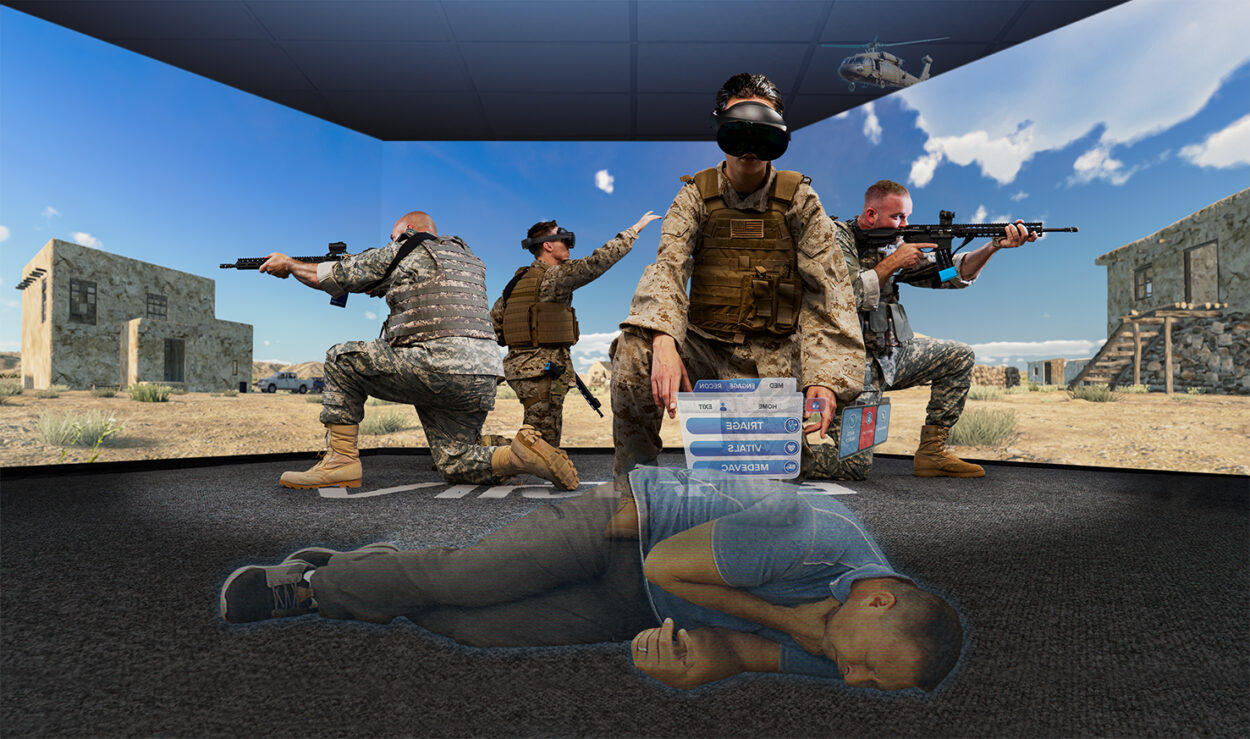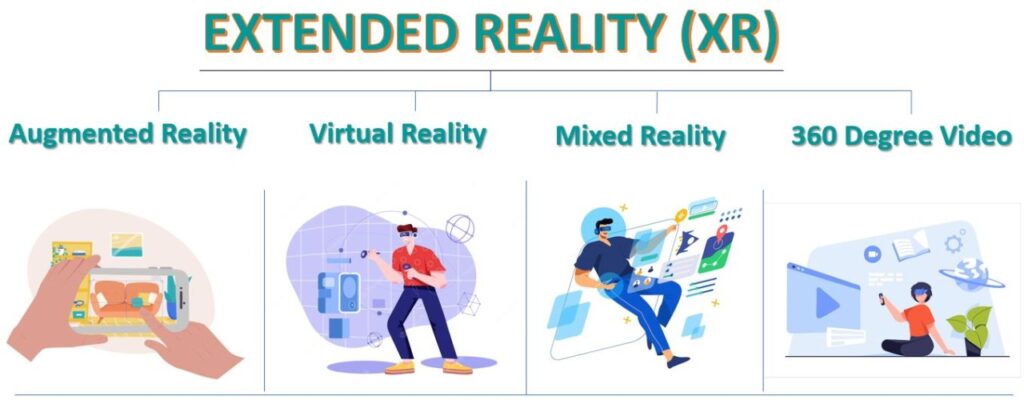Extended Reality (XR) for training enhances learning experiences by integrating virtual, augmented, and mixed realities. It offers immersive, interactive, and practical training solutions.
Extended Reality (XR) is revolutionizing training methodologies across various industries. By combining virtual, augmented, and mixed realities, XR provides immersive learning environments. Trainees can interact with realistic simulations, making learning more engaging and effective. This technology reduces training costs and enhances skill retention.
Companies can create customized training programs tailored to specific needs. XR also allows for safe practice of dangerous tasks, reducing risks. As XR technology advances, its applications in training continue to expand. Embracing XR in training can lead to better-prepared professionals and improved performance.
Introduction To Extended Reality
Extended Reality (XR) is revolutionizing training across various fields. This technology merges real and virtual worlds, offering immersive experiences. Trainees can now learn in a simulated environment that feels real.
What Is Xr?
Extended Reality (XR) is an umbrella term for immersive technologies. It includes Virtual Reality (VR), Augmented Reality (AR), and Mixed Reality (MR). XR creates interactive experiences by blending the physical and digital worlds.
Components Of Xr
XR consists of three main components:
- Virtual Reality (VR): This immerses users in a fully virtual environment. It requires VR headsets for viewing 3D models and simulations.
- Augmented Reality (AR): This overlays digital elements onto the real world. AR uses devices like smartphones or AR glasses.
- Mixed Reality (MR): This combines VR and AR. MR allows interaction with both physical and virtual objects in real-time.
| Component | Description | Devices Used |
|---|---|---|
| Virtual Reality (VR) | Fully immersive virtual environments | VR headsets |
| Augmented Reality (AR) | Overlays digital content on the real world | Smartphones, AR glasses |
| Mixed Reality (MR) | Combines VR and AR for interactive experiences | MR headsets |
XR technology is enhancing training by creating realistic simulations. It helps in fields like healthcare, aviation, and manufacturing. Trainees can practice skills in a risk-free environment, improving their confidence and competence.

Credit: www.afsoc.af.mil
Types Of Extended Reality
Extended Reality (XR) is transforming training across industries. It includes three main types: Virtual Reality (VR), Augmented Reality (AR), and Mixed Reality (MR). Each type offers unique features that enhance learning experiences. Let’s explore each one in detail.
Virtual Reality (vr)
Virtual Reality (VR) immerses users in a fully digital environment. Trainees wear VR headsets to enter simulated worlds. These worlds can replicate real-life scenarios or create entirely new experiences. VR is ideal for high-risk training, such as flight simulation or surgery practice.
- Fully immersive experience
- Controlled, safe training environment
- Enhanced engagement and retention
Augmented Reality (ar)
Augmented Reality (AR) overlays digital information on the real world. Using AR glasses or smartphones, trainees see digital elements integrated with their surroundings. AR is perfect for on-the-job training, providing real-time guidance and information.
- Real-world context with digital enhancements
- Interactive and intuitive learning
- Immediate feedback and assistance
Mixed Reality (mr)
Mixed Reality (MR) combines elements of both VR and AR. Users interact with digital objects in a real-world context. MR allows for more complex training scenarios, where digital and physical elements coexist and interact.
- Seamless integration of digital and real-world elements
- Enhanced interaction and collaboration
- Versatile training applications
| Type | Key Features | Best Use Cases |
|---|---|---|
| Virtual Reality (VR) | Fully immersive, controlled environment | Flight simulation, surgical training |
| Augmented Reality (AR) | Real-world context, digital overlays | On-the-job training, real-time guidance |
| Mixed Reality (MR) | Integration of digital and physical elements | Complex scenarios, collaborative training |
Benefits Of Xr In Training
Extended Reality (XR) is transforming the training landscape. It uses immersive technologies like Virtual Reality (VR), Augmented Reality (AR), and Mixed Reality (MR). These technologies offer numerous benefits in training programs.
Enhanced Engagement
Engagement is crucial for effective learning. XR provides an immersive experience. It captures the learner’s attention completely. Training through XR is interactive and fun. Learners feel like they are part of the action.
Let’s look at some key points:
- Immersive environments keep learners focused.
- Interactive elements make learning enjoyable.
- Real-time feedback enhances the learning experience.
Improved Retention
With XR, retention rates improve significantly. Learners remember more when they experience it. This is because XR stimulates multiple senses. It makes learning more memorable.
Here are some factors contributing to improved retention:
- Hands-on practice solidifies knowledge.
- Visual and auditory stimuli enhance memory.
- Repetition in a virtual environment reinforces learning.
| Benefit | Description |
|---|---|
| Enhanced Engagement | Immersive and interactive learning keeps learners focused. |
| Improved Retention | XR stimulates multiple senses, making learning memorable. |

Credit: www.virtra.com
Industries Adopting Xr Training
Extended Reality (XR) is changing how we train workers. Many industries now use XR training to improve skills and efficiency. Let’s explore some sectors that have adopted XR for training.
Healthcare
Healthcare is one of the top industries using XR for training. Doctors and nurses use virtual reality (VR) to practice surgeries. They can work on virtual patients without any risk. This helps them gain confidence and expertise.
Medical students also use XR for learning. They can study human anatomy in 3D. This makes learning more interactive and fun.
Manufacturing
Manufacturing companies use XR to train their workers. Workers can learn to operate machines in a virtual environment. This reduces the chances of mistakes and accidents. It also saves time and money.
XR training helps workers understand complex processes. They can visualize the entire production line. This makes it easier to spot and fix issues.
Education
Education is evolving with the help of XR. Teachers use virtual reality to take students on virtual field trips. Students can explore historical sites and natural wonders without leaving the classroom.
Augmented reality (AR) is also popular in schools. It brings textbooks to life with 3D models. This makes learning more engaging and memorable.
| Industry | Benefits of XR Training |
|---|---|
| Healthcare | Risk-free practice, 3D anatomy studies |
| Manufacturing | Safe machine operation, process visualization |
| Education | Virtual field trips, 3D textbooks |
Xr Training Tools And Technologies
Extended Reality (XR) is reshaping the training landscape. It uses immersive technologies to enhance learning experiences. This section delves into the various XR Training Tools and Technologies that are driving this transformation.
Headsets And Wearables
Headsets are crucial for XR training. They immerse users in virtual environments. Popular models include the Oculus Quest and HTC Vive. These headsets provide high-resolution displays and spatial audio. This enhances realism and engagement.
Wearables complement headsets by adding more sensory input. Haptic gloves are a good example. They let users feel and interact with virtual objects. This tactile feedback makes training more effective. Another wearable is the motion tracker. It captures body movements accurately.
| Device | Function |
|---|---|
| Oculus Quest | Immersive VR experiences |
| HTC Vive | High-resolution displays |
| Haptic Gloves | Tactile feedback |
| Motion Trackers | Body movement capture |
Software Platforms
Software platforms are the backbone of XR training. They host and deliver training content. Unity and Unreal Engine are popular choices. These platforms create detailed and interactive environments. They support various XR devices and formats.
Learning Management Systems (LMS) integrate with XR platforms. They track and assess learner progress. Moodle and Blackboard are common LMS options. They provide comprehensive analytics and reporting.
- Unity: For creating interactive environments.
- Unreal Engine: Known for high-quality graphics.
- Moodle: A popular LMS for tracking progress.
- Blackboard: Offers detailed analytics.
These software solutions make XR training scalable and efficient. They provide a seamless learning experience. They also enable real-time updates and customization.
Challenges In Xr Training Implementation
Implementing Extended Reality (XR) for training brings many challenges. These challenges can affect the effectiveness of training programs. Businesses need to understand these issues to make informed decisions.
High Costs
The costs of XR training are often high. This includes hardware, software, and content creation. Small businesses might struggle to afford these investments.
Here is a breakdown of typical costs:
| Item | Approximate Cost |
|---|---|
| VR Headsets | $300 – $1,000 each |
| AR Glasses | $500 – $2,500 each |
| Custom Content Creation | $5,000 – $50,000 |
Technical Limitations
XR technology is still evolving. Many devices have technical limitations. These can include resolution issues and limited battery life.
Some common technical challenges include:
- Low resolution in VR headsets
- Short battery life of AR glasses
- Lack of content compatibility
These technical issues can hinder training effectiveness. It’s important for companies to consider these limitations.
Future Of Xr In Skill Development
The future of Extended Reality (XR) in skill development is bright. XR technology is transforming the way we learn and train. It offers immersive, interactive, and engaging experiences. This section explores the future of XR in skill development with a focus on innovative trends and potential impacts.
Innovative Trends
XR is revolutionizing skill development with new trends. These trends make learning more effective and enjoyable.
- Virtual Reality (VR) Simulations: VR creates realistic training environments. It helps learners practice skills in a safe space.
- Augmented Reality (AR) Enhancements: AR overlays digital information on the real world. It provides real-time guidance and feedback.
- Mixed Reality (MR) Applications: MR combines VR and AR. It allows users to interact with both physical and digital objects.
- AI-Powered XR: AI enhances XR experiences. It personalizes training and adapts to individual needs.
- Wearable XR Devices: Wearables like smart glasses make XR more accessible. They enable hands-free learning and improve productivity.
Potential Impact
XR has a significant impact on skill development. It offers many benefits to learners and trainers.
| Benefit | Description |
|---|---|
| Enhanced Engagement | XR makes learning fun and interactive. It keeps learners engaged and motivated. |
| Improved Retention | Immersive experiences help retain information better. Learners remember what they practice. |
| Cost-Effective | XR reduces the need for physical resources. It lowers training costs. |
| Safety | XR provides a safe environment for practice. It minimizes risks and errors. |
| Scalability | XR training can be scaled easily. It can reach a large number of learners. |
In summary, the future of XR in skill development is promising. Innovative trends and potential impacts are driving this transformation. XR is making training more engaging, effective, and accessible.

Credit: www.weforum.org
Case Studies
Extended Reality (XR) offers immense potential for training across industries. Various companies have successfully implemented XR solutions to enhance learning experiences. This section explores notable case studies, focusing on successful implementations and lessons learned.
Successful Implementations
Different industries have embraced XR for training. These case studies highlight their success stories.
Healthcare: Surgical Training
A leading medical institution used XR to train surgeons. The virtual environment allowed doctors to practice complex procedures safely. As a result, the institution saw a 30% improvement in surgical accuracy.
Manufacturing: Employee Safety
A manufacturing giant adopted XR to teach safety protocols. Workers used virtual simulations to learn about hazardous scenarios. This training led to a 40% reduction in workplace accidents.
Retail: Customer Service
A major retail chain used XR to train staff in customer service. Employees practiced handling different customer interactions in a virtual store. Customer satisfaction scores increased by 25% after the training.
Lessons Learned
Implementing XR for training has provided valuable insights. Here are some key lessons learned from these case studies.
Customization is Key
Each industry has unique training needs. Customizing XR solutions ensures better engagement and effectiveness.
Initial Costs vs. Long-term Benefits
Initial investments in XR technology can be high. However, long-term benefits, such as improved performance and reduced errors, outweigh the costs.
Continuous Improvement
Regular updates and feedback loops are essential. Continuous improvement keeps the training relevant and effective.
Stakeholder Buy-in
Gaining support from all stakeholders is crucial. Involving them early in the process ensures smoother implementation.
User-Friendly Design
Ease of use is critical for XR training tools. Intuitive interfaces enhance learning experiences and adoption rates.
| Industry | Application | Outcome |
|---|---|---|
| Healthcare | Surgical Training | 30% improvement in surgical accuracy |
| Manufacturing | Employee Safety | 40% reduction in workplace accidents |
| Retail | Customer Service | 25% increase in customer satisfaction |
Frequently Asked Questions
What Is Extended Reality Xr In Education?
Extended Reality (XR) in education uses AR, VR, and MR to create immersive learning experiences. It enhances engagement and understanding.
What Is Xr Training?
XR training uses virtual, augmented, and mixed reality to create immersive learning experiences. It enhances skills through realistic simulations.
Is Virtual Reality Effective For Training?
Yes, Virtual Reality is highly effective for training. It provides immersive, hands-on experiences that enhance learning and retention. VR training reduces risks and costs while improving skills and performance.
How Could A Public Speaker Use Extended Reality Xr To Practice A Speech?
A public speaker can use Extended Reality (XR) to simulate real-world speaking environments, enhancing practice sessions and reducing anxiety. XR provides immersive experiences, allowing speakers to refine gestures, tone, and timing. This technology helps build confidence and improve overall presentation skills.
Conclusion
Extended Reality (XR) transforms training by offering immersive, interactive experiences. It enhances learning efficiency and engagement. Companies adopting XR see improved skill retention and performance. Embrace XR technology to stay competitive and innovate training methods. The future of training lies in the immersive capabilities of XR, making learning more effective and enjoyable.

